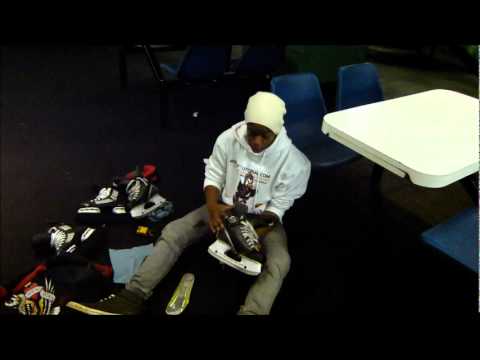How to Look After (New) Your Ice Hockey Skate – Care Tutorial
Skate Care tips
There are also very simple things you can do besides drying your skates after use and also doing up your laces the correct way. Remembering to undo your skates laces “enough” before placing your foot inside can make a huge difference. What i mean by this is a lot of skater only undo their skates just barely enough and have to push and squeeze their feet into their skates, this can cause unnecessary strain on the eyelets and the structure of the skate its self leading to premature breaking down of the skate (softening of the skate in areas the skate should be stiff) By undoing your skates enough and leaving yourself space to get your feet in, this prevents that problem of unnecessary strain.
Just finished a session of skating or a game of hockey?
Even though a large number of skate manufactures these days make all there blades with stainless steel (which will last longer than a normal runner and fights off rust) the rivets or bolts used to hold the blade holder to the base of the boot, are made from metals that form rust if not maintained and dried after use. It only takes a few seconds to use a paper towel to dry all the metal parts of your skates, this will ensure rust does not build up allowing your skates to last that much longer.
Looked after Left to build up rust
Dry your ice hockey skates
Blade protectors (save your edges)
A popular question is “how often should I get my skates sharpened” one of best ways to pre-long this process is to maintain your edges, after you’ve finished skating or playing hockey, protect the blade by making a small but effective investment of buying blade protectors Click Here To Buy. There are a number of reasons you will want to have your blades covered while not in use, the main reason being you do not want the blades edge become dull or become affected by trauma, any hard or uneven object that comes into direct contract with the edge of your blade can cause the blade to become dull or even create an offset blade, all of these different effetcs can lead to a seriously underperforming skaters and can be simply avoided.
Wear your blade guards when working around (even in the rink)
Even though the surfaces of most ice rinks are made for blades to be used and walked on, its important to wear your blade guards whenever possible, the surface may be soft and designed for skates to walk on, but the debris left there by the large numbers of people visiting are not, there could be anything from glass to stones that will dull your blades edge.
Un-doing the laces so you can get into and out of the skate?
It’s important to maintain the structural integrity of the boot (the shape and stiffness of your hockey skate) different brands and models of skates are made at different strengths (or stiffness) the higher the price goes, the stiffer the skate becomes (Skates and brands – stiff skate and soft skate) along with the weight of the skate decreasing and new features being added to it. Making sure you un-do the laces so you’re not putting unnecessary strain on them while taking them off. By simply un-doing all your laces when putting the skates on or taking them off, you help the skate to maintain shape and stiffness. Forcing your feet into and out of the skate will speed up the breakdown of the skates shape and stiffness.
Opening them up after use to dry properly
Opening your skates up to speed up the drying time will help keep the skates fresh, this will also help to fight any bacteria that may build up if they skates are left wet and closed.
Wearing socks (minimise sweat and bacteria)
Some skaters prefer to skate without wearing socks, its always a good idea to wear socks as it helps to keep the sweat from remaining inside the skate and also reduces the increase in bacteria (bad smell build up)
Doing your laces up correctly
A common mistake is the wrap the laces around the black of the skates, this probably the worst way to tie your skates up, it speeds up the breakdown of your skates as well as restricts your range of motion on the ice.
What are video on this topic for more information.














